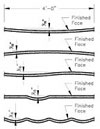
Figure 1: Gauged edges to eliminate lippage at underside of overhang.
How then, does one address the end user's complaints when these complaints are the result of slab quality? Variation in slab thickness and variation from true plane (warpage) are two common causes of homeowner complaints. Neither of these issues are under the control of the countertop fabricator. We then look for an industry-adopted standard - one that has been based on consensus opinion - to establish the limits of variation allowable for this product.

Click image for larger view. Figure 2: All slab surface profiles shown above would be compliant with the NBGQA's Flatness Tolerance.
Will the homeowner accept this degree of variation in the slabs used in their countertops? Not very likely, at least not at exposed edge conditions. Additionally, the Marble Institute's recently revised Residential Stone Countertop Installation guide limits the slab-to-slab variation on the underside of an exposed edge to 1â„32 inch. To the fabricator, the only means of making these slabs acceptable to the homeowner and compliant with the MIA's installation guide is by machining the underside of the overhanging portion of the slabs to a uniform thickness (see Figure 1). All slabs must be accurately measured to determine the thinnest slab in the project, and the exposed edges would need to be ground down to this thickness. When the fabricator does not have the capability to do this, or if this is simply cost prohibitive, the only options involve modifying the standard. As with any standard, the involved parties have the right to agree to a more or less stringent tolerance, provided the agreement is properly documented. In this case, that agreement can occur between the seller of the slabs and the fabricator, where the seller agrees that the sawing tolerance will be less than the +/- 1â„8 inch (+/- 3 mm) prescribed by the NBGQA. Or the agreement can occur between the fabricator and the homeowner, where the homeowner can agree to accept greater than 1â„32 inch of variation between adjacent slabs.

Figure 3: MIA's Residential Countertop Installation Guide limits lippage to 1â„32 inch at center of countertop.
While the issue of thickness tolerance in slabs is one that can be addressed with improved equipment, the warpage of slabs cannot be so addressed. Warpage of stone slabs is a naturally occurring condition in the slabs. Often times, the force required to eliminate the warp of a slab approaches the stress at which fracture occurs. A technology that controls warps would be welcome, but I don't see it arriving any time soon, if at all. Diligent customer communication and education will go a long way in reducing complaints due to warps. As a last resort, some stock culling may be necessary to produce acceptable results in the finished installation.